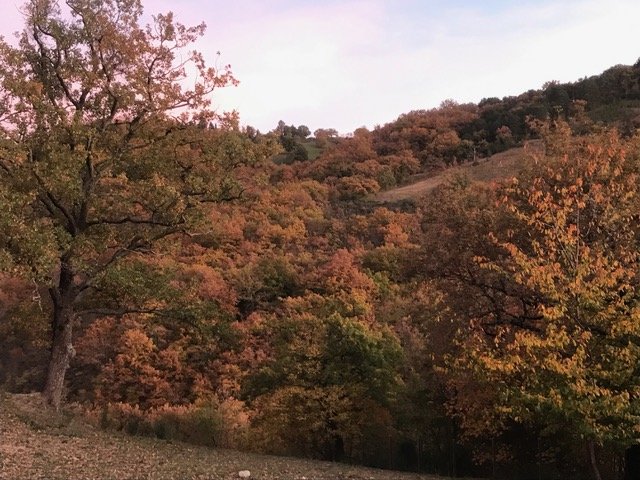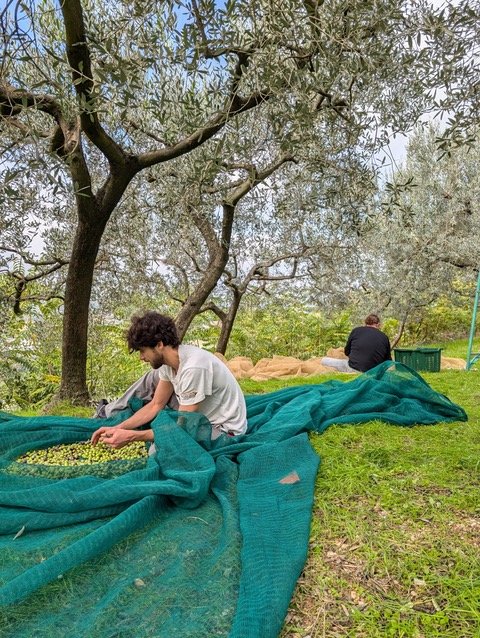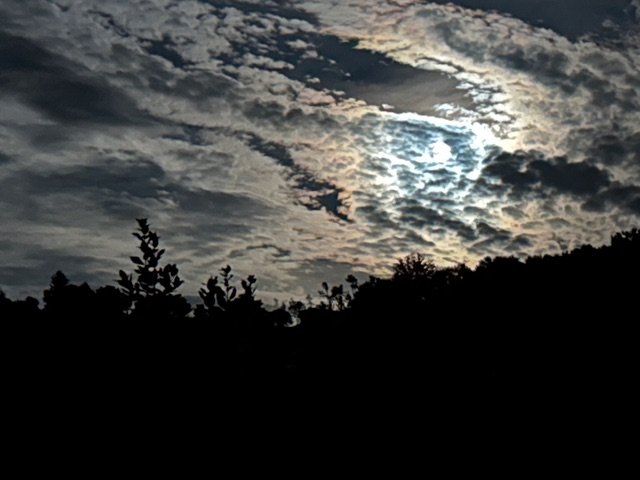All Hallows Eve
I love this season. The dark is rising. The twelve hour evening hibernation is just what is needed after the long summer workdays. The colors of the trees and even the vine climbing up the wall of the house are enough to make me swoon. The ground is awash in acorns, which means plenty of winter food for the wild boar. After a summer of worry for the forest creatures, the vast collections of fallen fruits and the mushrooms popping up under trees and on the downed wood means enough for the hedgehogs and foxes, squirrels, and all the co-housing species in the hedgerows. After a summer of drought, the fields are just now brimming with wildflowers, with tall grasses, with life.
All Hallows Eve—which bears no resemblance to the American sugar-fest of Halloween—is a celebration of a turn of the wheel of the year, an ending and a beginning. I celebrate it in my own pagan sort of way, adding Italian history and lore. I sit in front of the fire calling to all the ancestors and the beloved people who once filled my life. They are with me during this night. It is a time when I acknowledge their importance to me. It is also the perfect time to remind myself of my own mortality and the impermanence of all things. It brings me into being fully present in the moment, appreciating all that the earth provides at such a fragile time for our species and all animal life. Every season is about change but autumn, in particular, is a time of death and regeneration. This year in particular.
photograph by Tanya D. Fox
Summer was challenging for many farmers but fall on my mountain has been curiously abundant. In the gardens, the tomatoes are finally beginning to concede territory to enlarging heads of broccoli and cauliflower, though the peppers hang on valiantly. For many of the small farmers in the mid-latitudes, the fall harvest does not mean we are on vacation. Our summers have become too hot and too dry to sustain many of our traditional regional crops. Right now our gardens and fields are growing the food for deep winter. The hardy cruciferous veggies—native to this region, along with peas and fava beans—survive even in light snow. The winter wheat and farro have just been planted. But then, we farm in the bread basket, and planting grains now is also traditional. Fall has always been a new beginning.
photograph by Tanya D. Fox
Here in Italy, November First is All Saint's Day (La Festa di Ognissanti) and it is widely celebrated. The day after is All Soul's (La Festa nel Girono dei Morti) when we remember all those departed. These holidays are about rebirth as much as they are about death. Flowers and food are abundant—at the cemetery and at home. Chrysanthemums are traditonally brought to graves. The plants (not cut flowers) are sold at all the florists and open air markets in an astounding number of colors. I plant them in the gardens near the graves of our companion animals. As perennial flowers, they bloom lavishly all October and November. They go dormant in the winter, the herbaceous parts dying back to regenerate into green shrubs in the spring, blooming lavishly again in late October.
The grocery stores are swimming in desserts, the all-time favorite being fave dei morti, an almond cookie shapped like a broad bean, hence its name. The Egyptians and the Romans considered broad beans a symbol of life after death—the afterlife—perhaps because broad beans grow abundantly in our winters. Long before Christ, these cookies were funeral offerings to the gods. In ancient Greece, it was believed that eating the beans assisted in communication with the dead.
In Italy we plant fava beans on November 1. It is not a coincidence.
All Hallow's Eve is the mid-point between the autumn equinox and the winter solstice. In many ways it marks the end of the farmers year as well as the beginning of the next. Our main harvest — olives for oil — will be completed today when the olives are brought to the mill to be pressed. But the next generation of many of our self-seeding crops is being disseminated right now as the parent plants die back. And the calendula has just begun blooming, just a few days before All Hallows Eve. The older hens have stopped laying eggs until after the growing light with the winter solstice. But miraculously, the young hens, the ones born late spring this year, have just begun to lay. Three new eggs in the nest this morning. It is a graphic reminder of the cycling... birth into death into rebirth.
photograph by Tanya D. Fox
© www.thesubversivefarmer.net October 2024
In a previous lifetime, Zia Gallina worked as a botanist for the National Parks Service, on the C&O Canal outside of Washington D.C. (lecturing on wild indigenous and naturalized medicinal and culinary plants). She was also an adjunct professor teaching biology and environmental science at American University, Washington D.C. But she has always been a champion of small-scale biointensive farming, tagging behind Mother Nature, trying to stay as close as she can get.






